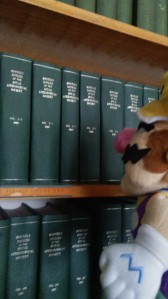“We can’t see the stars tonight ’cause apartments generate ambient light”
Bomb the music industry! – Stand there until you’re sober
If you step outside on a clear night and look up at the sky, chances are you’ll see some stars. Not lots, but some.
Most of us live in towns and cities where ambient light from houses, cars, streetlights and other human-made sources create light pollution. This light pollution drowns out light coming from the fainter stars, so we only see the brightest ones, such as those in Orion’s belt or the Plough.
To really see the stars you need to get away from people! Heading out into a remote location on a clear night, away from the bright lights of the towns and cities reveals a spectacular sight. Let your eyes adjust to the dark and you’ll see countless stars, meteors, satellites, and the band of the Milky Way. Under really good conditions your eyes can even pick out the faint smudge of light that is the Andromeda galaxy, 2.5 million lightyears away. The International Dark-Sky Association maintains a list of Dark Sky Places which are ideal for such stargazing. Professional optical astronomical observatories are located in some of the most remote locations in the world, on tops of mountains or in high deserts, not only away from light pollution but above the clouds and much of the atmosphere.
Light pollution is becoming more and more of a problem. A recent study found that 60% of Europeans and nearly 80% of North Americans live in locations where the Milky Way has become invisible due to light pollution. While this might not seem like too big a deal to many people, after all astronomers can just go to one of the dark locations mentioned above, there are other, perhaps more direct, consequences. Light pollution has been reported to negatively affect birds, mammals, and even humans. Not to mention that it seems like a waste of electricity to light up the skies instead of the ground! Luckily projects like the International Dark-Sky Association are campaigning to raise awareness of light pollution, and protect our remaining dark skies sites. You can help by participating in citizen science projects such as Globe at Night, which asks members of the public to report how many stars they can see in a particular constellation, in order to measure the light pollution where they are.
Despite all of this, it’s still worth having a look up at the sky from wherever you are. Even from the middle of a city you can still see the brightest stars, as well as the Moon and some planets at the right time of the night/month/year. I’m yet to go somewhere where the light pollution is so bad that I couldn’t see any stars (as Bomb the music industry! suggest) and have successfully done public stargazing events from the centres of Portsmouth and Manchester. So get out and look up!


 The timings of the eclipse and how much of the Sun gets covered up will be slightly different depending on where you are in the country. Where I work in Portsmouth, the maximum will happen four minutes earlier and only 85% of the Sun will be covered up. Go north to Edinburgh and the maximum obscuration will be 93% at 09:35. Of course realistically it won’t really look different wherever you are in the UK. To see the total solar eclipse, with the Sun completely obscured by the Moon, you’ll need to go way north, to the Faroe Islands or Svalbard.
The timings of the eclipse and how much of the Sun gets covered up will be slightly different depending on where you are in the country. Where I work in Portsmouth, the maximum will happen four minutes earlier and only 85% of the Sun will be covered up. Go north to Edinburgh and the maximum obscuration will be 93% at 09:35. Of course realistically it won’t really look different wherever you are in the UK. To see the total solar eclipse, with the Sun completely obscured by the Moon, you’ll need to go way north, to the Faroe Islands or Svalbard.







